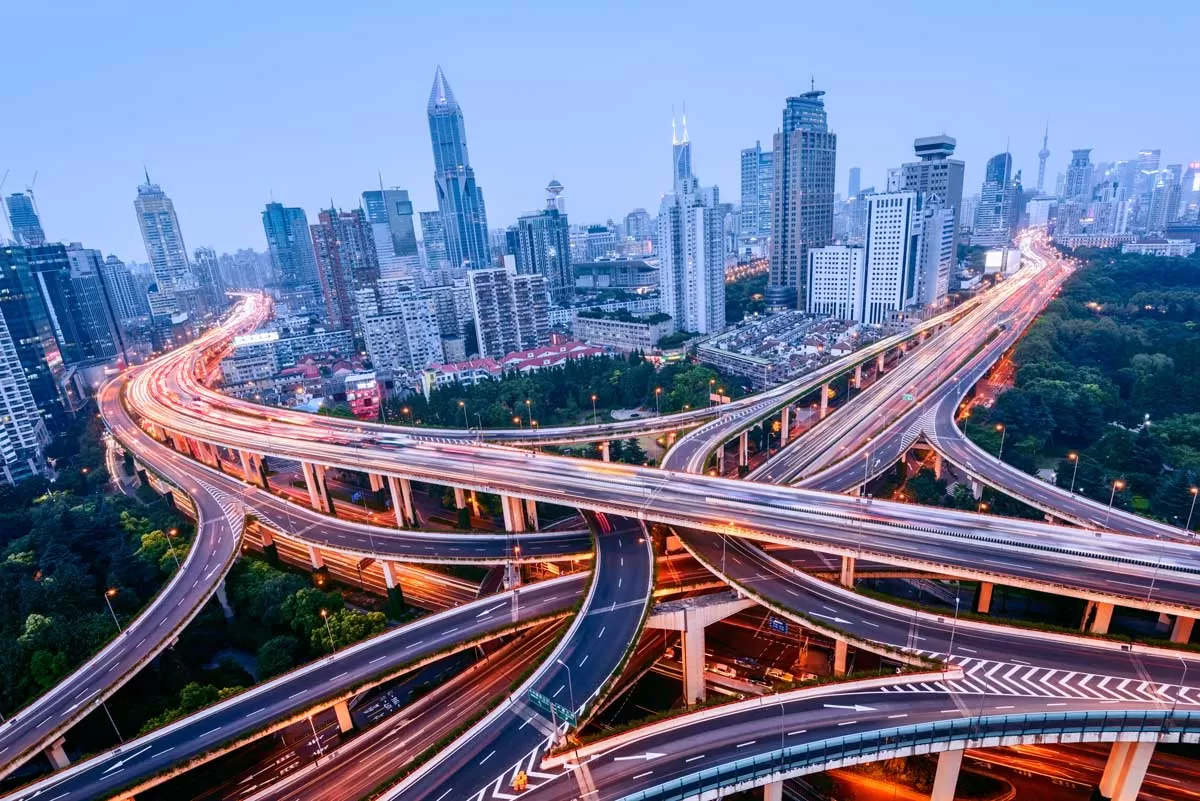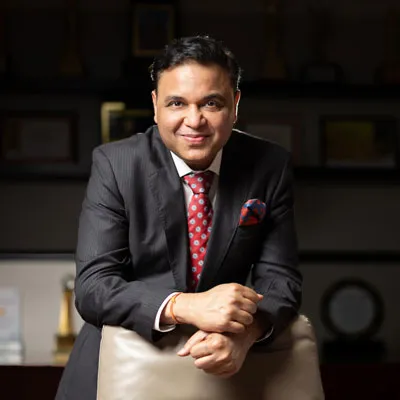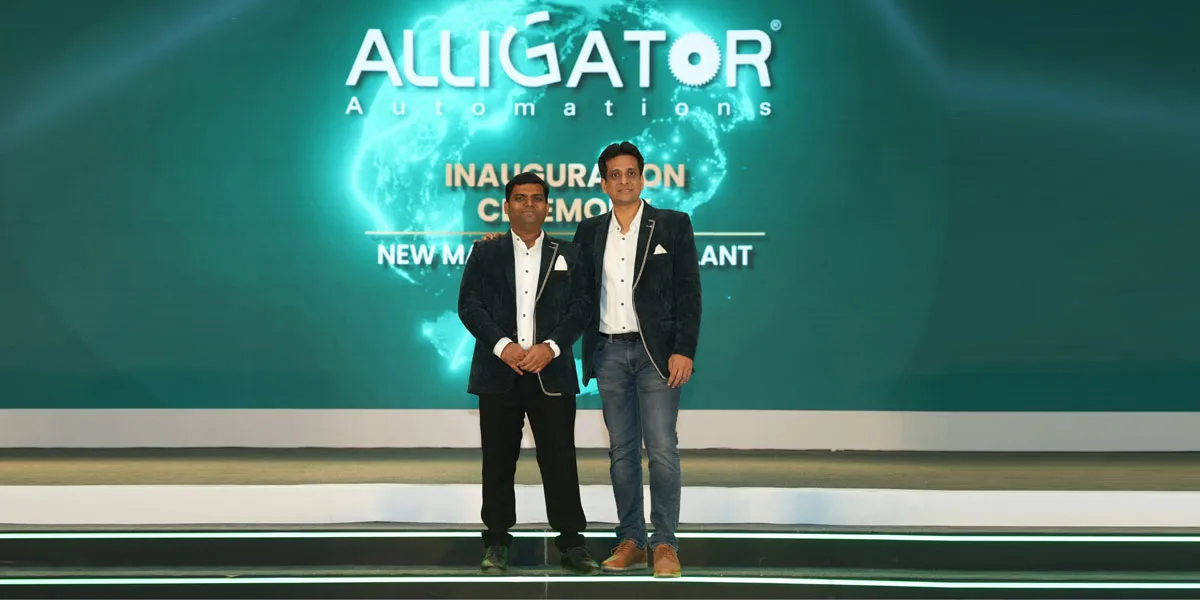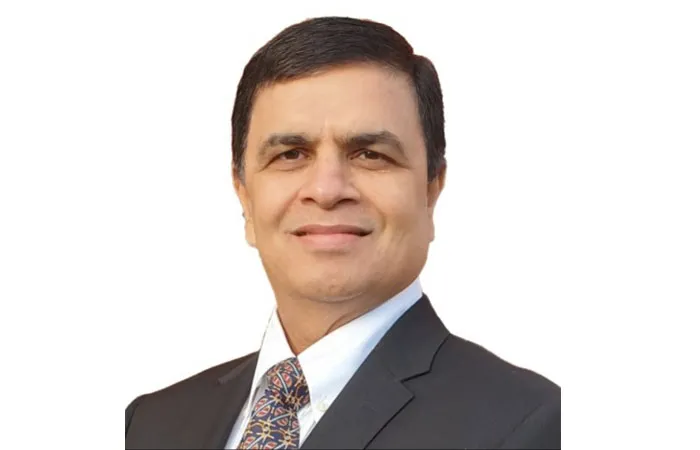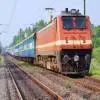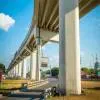In FY21, the Indian highway network expanded at a daily rate of 37 km, setting a new record. This high more or less continued in the ensuing years, backed by the Ministry of Roads, Transport and Highways (MoRTH) awarding about 12,000 km of national highway projects annually from FY21 through to FY23. But project awarding slowed down to around 8,600 km in FY24 and is expected to have stayed at that level in FY25, observes Aniket Dani, Director – Research, Crisil Intelligence. Slower awards and slower execution go hand in hand. “The execution pace of national highways is estimated to have declined by 7-10 per cent in FY25,” says Maulesh Desai, Director, CareEdge Ratings. In FY26, CareEdge Ratings forecasts further decline in the pace of construction owing to execution hurdles and lower awarding in FY24 and FY25, which Desai attributes to the pending cost reassessment of the Bharatmala projects and cabinet approval thereof.Despite this slowdown, the Government plans to operationalise 5,800 km of high-speed corridors and complete 3,300 km of access-controlled highways by March 31, 2026.Isn’t this overly ambitious in the light of prevailing challenges?Structural issuesThe plan is overambitious because of land acquisition and environmental clearances, avers Satyanarayan Purohit, Vice President, Dilip Buildcon.“Land acquisition is always the biggest roadblock,” he says. “Securing land for vast stretches of such corridors and access-controlled highways can take a lot of time because of local protests, compensation disputes and legal hurdles. Environmental clearances, especially in ecologically sensitive areas or regions with protected wildlife zones, further delay projects.”An in-depth analysis by CareEdge Ratings of 374 hybrid annuity model (HAM) projects awarded by the National Highways Authority of India (NHAI) between 2015 and 2024 showed that among the under-construction projects totalling Rs 1.83 lakh crore, 55 per cent with an aggregate bid project cost (BPC) of Rs 1 lakh crore were delayed by more than six months. The key factors contributing to these delays included a standard construction period of two years regardless of project complexities, a more competitive environment, non-availability of hindrance-free right of way (RoW) and excessive rainfall.Further, as on December 31, 2024, projects with a BPC exceeding Rs 40,000 crore were awaiting their appointed dates for over a year since being awarded. Intensified focus on greenfield expressways and highways, which has compounded land acquisition challenges, is the primary reason for these prolonged delays, according to CareEdge Ratings.Challenging targets will come within the realm of possibility if the time lag between the date of award and the declaration of the appointed date is reduced, says Desai. And also, if the authority ensures that hindrance-free land is available on the appointed date, time and costs are saved through the use of innovative designs and construction materials like precast, and quality construction and the timely completion of projects are emphasised through stricter project monitoring. Nilachal Mishra, Partner and Head of Government & Public Services, KPMG in India, says the targets will be achieved “if the Government focuses on timely land acquisition, environmental clearances, the availability of construction materials and coordination across multiple agencies”.Devayan Dey, Partner, Transport, Logistics and Infrastructure sector, PwC India, believes the targets are attainable if projects like the Delhi-Mumbai Expressway and Bengaluru-Chennai Expressway, which are already in advanced stages, remain on schedule. “It’s important not to postpone addressing longstanding structural problems in this sector, such as land acquisition and regulatory clearances. There is still much work to be done to address these foundational challenges.”Reviving BOTAddressing structural challenges is as critical to achieve targets as it is to revive new project rollout and private-sector interest in build-operate-transfer (BOT-Toll) projects, the award mode the Government is pivoting towards.CareEdge Ratings anticipates the ongoing shift in the awarding preference from engineering procurement and construction (EPC) to the HAM and BOT-Toll awarding mode in the medium term to reduce the share of EPC projects from the previous trend of approximately 45 per cent to 25-30 per cent. According to Desai, “This change will help reduce NHAI’s funding requirements while maintaining a focus on construction quality.”He notes that starting from FY25, the NHAI has begun awarding BOT-Toll projects under a revised model concession agreement, where the funding requirement from the authority is expected to be only 20-25 per cent of the project cost, compared to 100 per cent for EPC projects.Last year, Union Minister of Roads, Transport and Highways Nitin Gadkari spoke of the Government’s commitment “to revive the BOT model and make it investment-friendly and attractive for private partnerships”.Among the proposed modifications to the model concession agreement of BOT (Toll) were provisions to eliminate discrepancies such as determination of termination payments, modifications in the concession period based on actual traffic as against tolling vehicles, compensation for delays on the part of the authority, a buyback provision if a competing road is built and reduces the traffic for the developer, and so on.Gadkari has recently said that he is working towards enabling the daily construction of 100 km of highways, and that the Government plans to invest Rs 10 lakh crore into highway upgradation over two years, especially in the East and Northeast, through projects of the NHAI, MoRTH and the National Highways and Infrastructure Development Corporation Ltd. In that light, a broader revival of private-sector interest in BOT models is vital. In recent years, mechanisms like harmonious substitution, one-time fund infusion, rationalised compensation, premium deferment and provisions for refinancing have helped address legacy issues and improve the overall environment. In Dey’s view, “All those measures weren’t entirely unsuccessful; they just focused on immediate symptoms rather than addressing root causes, an intentional approach based on the priority.”As Mishra says, “reviving private-sector interest in BOT models may require continued efforts to build on the foundation [set by previous mechanisms]”.Investing in BOT projects necessitates a longer view by the private sector, especially planning around working capital concerns and tying up capital across multiple projects, he points out. That said, “We have heard of private developers who want to invest only in the BOT space. But for that to happen, a shelf of viable BOT projects also has to be shown by the Ministry.” Essentially, the private sector is looking for some predictability for planning. Without that, Mishra fears, “the untapped demand will remain hidden”. He believes the Government’s budget announcement on a three-year, ministry-wise PPP pipeline could help fill this gap, if done well. “Evolving risk perceptions, the need for a strong pipeline of viable projects, alignment of the financing ecosystem, and further trust-building through transparent processes and timely dispute resolution will be key.”Project viability is closely tied to traffic volatility. In this context, Dey points out, “Traffic volatility and competition from other transportation modes make toll projects understandably less attractive to lenders. It’s often said that lenders are wary of traffic risk and there’s some truth to this.” His primary concern is the private sector’s ability to deliver, particularly regarding delivery capacity, working capital, liquidity and access to funds. “The significant challenges are capacity and bankability,” he adds. In Dey’s view, “Relaxations in qualification criteria have led to excessive competition in recent years, resulting in slim margins – sometimes even single-digit EBITDA – and weakened balance sheets. This is precisely what lenders find unappealing.” Nonetheless, he points out that toll-operate-transfer (TOT) projects continue to receive funding, particularly when supported by bidders with a strong track record and sound financial management. So, he reckons that for BOT Toll projects to succeed, “the industry must first be incentivised to improve financial governance, management and efficiency”.Without these improvements, Dey says there is a risk of encountering numerous false bids. “Having multiple bidders on a project is not beneficial if financial closure is delayed or the project faces liquidity challenges. I am sure NHAI is somewhere conscious of this aspect, and therefore a slower pipeline.”Secondary concerns surrounding amendments to the concession agreement, buyback, termination, change of ownership, etc, will need to be solved as well. However, those are solvable problems and not central to the broader BOT concerns.A healthier NHAIFor its part, NHAI has been actively working on improving its financial health by reducing its debt liability. Pegged at around Rs 3.3 lakh crore at the start of April 2024, NHAI’s debt has been whittled down to Rs 2.8 lakh crore a year later, an outcome of prepayment made possible by increased budgetary support and substantial achievement of asset monetisation targets, according to Desai.“Budgetary support to NHAI has increased from approximately Rs 0.36 lakh crore in FY23 to around Rs 1.69 lakh crore in FY25,” he continues. “Further, the authority raised Rs 68,000 crore over FY24 and FY25 through asset monetisation.”During FY25, NHAI monetised assets worth Rs 28,724 crore, including its highest-ever single-round infrastructure investment trust (InvIT) receipt of Rs 17,738 crore, which Arpan Ghosh, President - Engineering, Cube Highways Technologies, calls a notable example of asset recycling delivering tangible results. “Debt prepayment, by saving interest costs and improving fiscal efficiency, is part of a broader strategy of asset recycling, where proceeds from monetisation – particularly through InvITs and TOT – are used to reduce debt,” he observes.By prepaying debt, NHAI is effectively reducing its liabilities, and improving its debt-to-equity ratio and overall financial health, says Purohit. According to Mishra, the authority’s move to prepay a portion of its debt reflects prudent fiscal management and a strategic focus on long-term financial sustainability. “Reducing debt liability can strengthen NHAI’s balance sheet, improve creditworthiness and potentially lower borrowing costs in the future.” While there may be questions around the impact on funding for new projects, Mishra believes it is likely that a balanced approach will be maintained where fiscal discipline coexists with continued infrastructure investment. So far, the prepayment initiative does not appear to be negatively impacting investor or lender sentiment; in fact, he feels it may enhance confidence by signalling financial resilience and proactive governance.Dey believes the sentiments of investors and lenders should have improved as a result of debt reduction initiatives and a robust monetisation pipeline and targets. “Strong support from the Union Government, by way of a capital expenditure allocation of Rs 2.87 lakh crore for MoRTH in FY26, an increase of 2.41 per cent over FY25, and 30 per cent of projects planned under the PPP model, which may translate into a private capital target of Rs 35,000 crore, is a key positive.”Continuing on this course could result in better credit ratings from agencies like Moody’s, S&P and Fitch, notes Purohit, an achievement that would reduce borrowing costs in the future and potentially increase construction speed.CareEdge Ratings does not foresee any major challenge to lender sentiment owing to prepayment of debt by NHAI. Desai also points out that the authority’s credit profile derives strength from its sovereign ownership and its strategic importance for the Government of India. “NHAI enjoys considerable financial flexibility,” he adds. “It can raise funds through the securitisation of its healthy toll collections and by funding projects through SPVs like DME Development Ltd (rated CARE AAA; Stable).” Ghosh points out that NHAI retains the flexibility to raise additional debt if required. According to him, the current focus on InvIT monetisation over aggressive new project announcements appears pragmatic. Rather than a liquidity crunch, it reflects a strategic shift toward capital efficiency and phased infrastructure expansion amid execution bottlenecks.TOT concerns While asset monetisation is playing a key role in improving the financial health of NHAI, its FY26 target is Rs 9,000 crore less than the Rs 39,000 crore target for FY25. Some developers are interpreting this as a decrease in future highway development because they believe the authority will have fewer funds to invest. Desai believes otherwise, explaining, “The Rs 9,000 crore reduction in the asset monetisation target is an outcome of the shift in NHAI’s expected project awarding mode [from EPC to BOT and HAM] and corresponding funding requirements.”The revision in the asset monetisation target appears to be a calibrated response to the current pace of roadway development, believes Mishra. “From a private-sector perspective, the focus remains on the quality and bankability of available assets rather than just the quantum. Well-structured opportunities with stable revenue profiles continue to attract interest and the overall pipeline remains strong. As the asset monetisation programme evolves, it is expected to remain an important enabler for private participation and long-term investment in the sector.”However, the lower target for asset monetisation will generate fewer opportunities for private players involved in toll operations or asset management, to invest in and operate highway projects through mechanisms like TOT or InvITs, observes Purohit. “InvITs and other asset-backed financial instruments that depend on highway monetisation to generate returns may see slower growth if the Government cuts back on the available pool of assets for monetisation.”As things stand, reports suggest a policy tilt in favour of InvITs compared to the TOT model. Behind this, Dani explains, is the fact that InvITs offer better returns and are more attractive to long-term institutional investors. So, even if the total value of assets being monetised is lower, the Government is likely to stay active in raising funds through capital markets.However, combined with limited TOT offerings, the Government’s preference may restrict private players from expanding their asset base via NHAI auctions, potentially delaying acquisitions for private InvITs. Notably, the only TOT award during the year was TOT Bundle 16 – a 251-km stretch on the Hyderabad-Nagpur corridor (NH-44) in Telangana – granted to Highway Infrastructure Trust for Rs 6,661 crore over 20 years.Ghosh expects fewer bundles to intensify competition, drive up bid premiums and tighten margins. “Moreover, mature asset scarcity could push players toward private or state-level highway deals and spur diversification into adjacent infrastructure sectors such as railways, logistics parks or urban mobility to maintain a steady deal flow.”Various factors influence investment dynamics, explains Dey. “First, other sectors also demand investment and investors are keen to diversify into different asset classes. Second, there’s a secondary deals market beyond the TOT and NHAI InVIT, which requires a portion of investment capital. Many EPC players are actively seeking to recycle capital by selling operational assets, indicating a plentiful supply of assets. This approach seems sensible, given that the available capital in the market is not limitless.”A fresh review of the TOT model concession agreement was anticipated to enhance its viability and attract greater investor interest, thus addressing both investor and government concerns. Industry insiders were hoping this would be released by April 2025 but it remains pending as on the day of writing this article.The saving grace may be if MoRTH raises more funds through asset monetisation than it targets. As Dani points out, this happened in FY24 when the Rs 40,314 crore raised through asset monetisation surpassed the initial target of Rs 28,968 crore.Asset monetisation aside, the other ambitious targets for FY26 reflect the Government’s strong commitment to infrastructure-led growth. While execution capabilities in the sector have significantly improved over the years, maintaining this momentum at scale will require continued focus on project readiness, contractor capacity and quality, streamlined approvals, sustained efforts and close monitoring.
Highway design: What’s missing?
Sometimes road fatalities are attributed to their design. If so, what should be done to improve highway safety?
“Poorly designed roads, particularly in curves, contribute to road accidents,” says Satish Pandey, Senior Principal Scientist & Head Flexible Pavement Division, Associate Professor, Academy of Scientific & Innovative Research AcSIR, CSIR-Central Road Research Institute (CRRI).
“Poor road surface is the main reason drivers lose control by making the vehicle unstable and heating up tires, resulting in tire bursts,” says Ujwal Kunte, Founder and Managing Director, Construction Quality Rating Agency. “The surface quality of concrete roads, which defines the speed limits that need to be imposed to keep vehicles safe, has always been subpar in India compared to international standards. In India, the speed limits are 80 to 100 kmph on most roads while one can easily travel at 130 to 150 kmph on the autobahn in Germany.”
Other persisting safety challenges include inadequate lighting and accident-prone black spots, he adds.
According to Satyanarayan Purohit, Vice President, Dilip Buildcon, “Improving highway safety is a multifaceted challenge. It requires addressing road design, driver behaviour, law enforcement, vehicle standards and emergency response systems.”
“Precautions at the design level include junction design, as many fatal accidents happen at poorly designed intersections or junctions,” he continues. “Redesigning these to provide clear lanes for merging traffic, along with adequate turn lanes, signal-controlled crossings and roundabouts to manage traffic more safely, would help prevent accidents. Highways should be designed with separate lanes or walkways for pedestrians and cyclists. Elevated crossings or underpasses for pedestrians must be provided at dangerous points.”
Purohit proposes investments in intelligent traffic management systems to predict traffic flows in advance and control accidents.
The Government should consider implementing a mandatory grading system for infrastructure projects, inspired by Singapore’s successful model, recommends Kunte. Further, “access control should be extended to more national highways to minimise accidents caused by mixed traffic. Lane discipline and speed limit enforcement require more consistent implementation across all roads, with increased use of automated monitoring systems. A greater focus on dedicated lanes for various vehicles and smart safety technologies is crucial. Additionally, sustained public awareness campaigns and improvements in emergency care would make Indian highways safer and more reliable for all.”
According to Pandey, “what would help is getting a qualified independent agency such as the CRRI or IIT to mandatorily review the DPR consultant/concessionaire’s geometric design of the road from the road safety point of view. Conducting such evaluation before commencing roadworks would help ensure adherence with the prescribed guidelines of the Indian Road Congress for the geometric design of highways for different terrain conditions and, thus, improve road safety from the design perspective. To improve the safety of road users, compliance with the necessary design provisions on the project construction site is also essential.”
Government initiatives to enhance highway safety
Initiatives by the Ministry of Road Transport and Highways (MoRTH) to improve road safety on national highways include road safety audits (RSA) by independent road safety auditors at all stages, be it feasibility, design, construction or pre-opening, says Satish Pandey, Senior Principal Scientist & Head Flexible Pavement Division, Associate Professor, Academy of Scientific & Innovative Research AcSIR, CSIR-Central Road Research Institute (CRRI). “Audits are also required to be carried out on existing national highways and for improvement projects.”
Pandey also notes that the Indian Road Congress is updating and developing new highway standards to improve road safety on highways.
“Identifying and rectifying thousands of high-risk zones, conducting safety audits of highways and establishing driver training institutes across the country are some of the measures the Government has taken to reduce road accidents and fatalities,” says Ujwal Kunte, Founder and Managing Director, Construction Quality Rating Agency. “To further enhance quality and accountability, the Government is promoting higher construction standards.”
Evolving definitions of highways
Highways used to be two to four-lane roads with basic bituminous surfaces, low shoulders and limited durability. But now, they can be six to eight-lane access-controlled expressways with service roads, wider shoulders and multilevel interchanges with provision for more lanes in the future. “In the last decade, the definition of highway has evolved, from focusing on parameters like width and pavement quality to also encompass factors like traffic flow management, safety features and technological integration,” says Ujwal Kunte, Founder and Managing Director, Construction Quality Rating Agency. “Designs now feature world-class geometrics, elevated corridors and intelligent transport systems; access has been streamlined with 100 per cent FASTag adoption, GPS-based tolling and smart interchanges; speed is optimised via variable message signs and automated enforcement; quality has improved with recycled materials, perpetual pavements and real-time monitoring; while safety leverages AI-powered surveillance, retro-reflective markings and crash cushions.”
“Paving materials have also advanced significantly,” he adds. “With the use of durable and sustainable construction polymer-modified bitumen, rigid concrete and even recycled waste materials, the industry is moving towards building high-capacity, climate-resilient road infrastructure that can endure faster speeds and heavier loads while requiring less maintenance over time.”
Classification of roads by the Indian Road Congress
Class
Category
Description
Class 1
Expressways and National Highways
High-capacity roads designed for
high-speed traffic, often with multiple lanes and full or partial access
control. Access control
differentiates expressways and highways. Expressways have limited
access points, while highways have multiple roads that merge with
them. Expressways are designed for higher speeds and have more features
to manage traffic flow. IRC:SP 99:2013 is a manual of specifications and
standards for expressway design widely used across India.
Class 2-5
State Highways, Major District Roads
and Other District Roads
These roads are typically used for
intrastate and interdistrict travel, connecting major towns and
villages.
Class 6
Village Roads
These are the lowest capacity roads,
often used for local traffic and connecting villages.
Quotes
1. Poorly designed roads, particularly in curves, contribute to road accidents. - Satish Pandey, Senior Principal Scientist & Head Flexible Pavement Division, Associate Professor, Academy of Scientific & Innovative Research AcSIR, CSIR-Central Road Research Institute
2. Poor road surface is the main reason drivers lose control by making the vehicle unstable and heating up tires, resulting in tire bursts. - Ujwal Kunte, Founder and Managing Director, Construction Quality Rating Agency
3. Land acquisition is always the biggest roadblock. - Satyanarayan Purohit, Vice President, Dilip Buildcon
4. Traffic volatility and competition from other transportation modes make toll projects understandably less attractive to lenders. - Devayan Dey, Partner, Transport, Logistics and Infrastructure sector, PwC India
5. It is likely that a balanced approach will be maintained where fiscal discipline coexists with continued infrastructure investment. - Nilachal Mishra, Partner and Head of Government & Public Services, KPMG in India
6. Even if the total value of assets being monetised is lower, the Government is likely to stay active in raising funds through capital markets. - Aniket Dani, Director - Research at Crisil Intelligence
7. NHAI’s credit profile derives strength from its sovereign ownership and its strategic importance for the Government of India. - Maulesh Desai, Director, CareEdge Ratings
8. Debt prepayment is part of a broader strategy of asset recycling. - Arpan Ghosh, President - Engineering, Cube Highways Technologies
